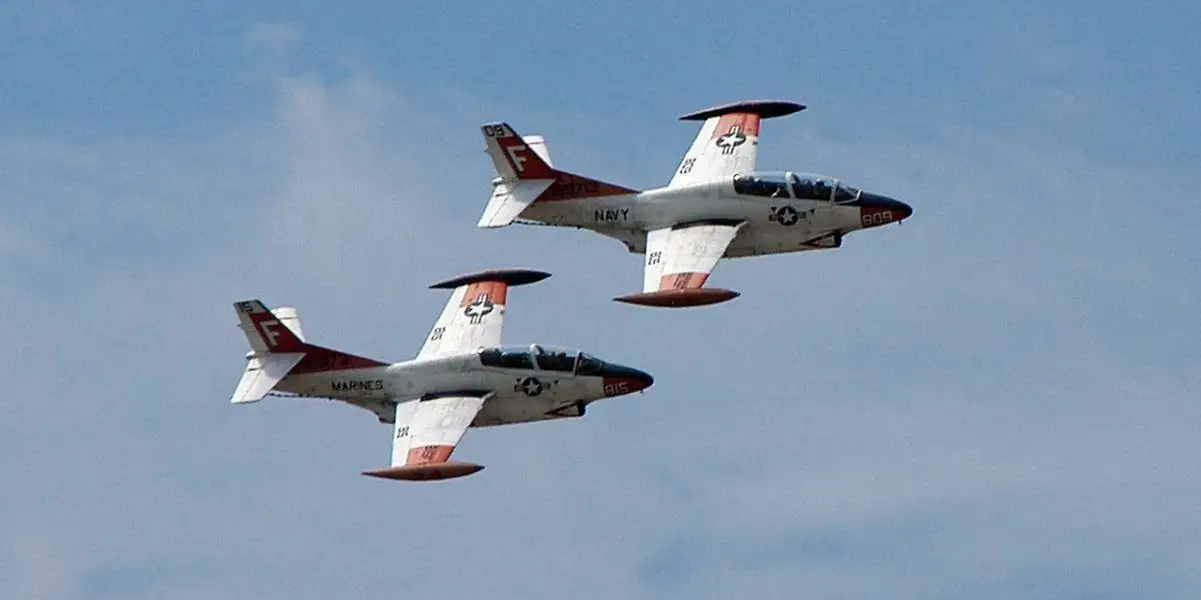Bird strikes
Bird strikes occur frequently. According to the Department of Defense Partners in Flight (DoD PIF) program, roughly 3,000 wildlife-strike events are documented annually for military planes and over 2,300 for civil aircraft.
Many prevention initiatives have been implemented to reduce these bird-strike incidents, such as the Bird/Wildlife Aircraft Strike Hazard program.
“Habitat modifications and scaring birds away from the runways is an integral part of the answer, but understanding the behavior and movements of birds in relation to the airfield environment and military training routes by pilots and aircrews is also a critical factor in reducing bird strikes,” the DoD PIF says.
But what is the protocol to follow if a Naval Aviator experiences a bird strike while landing on an aircraft carrier?
Bird strike while landing on an aircraft carrier
David Tussey, former US Navy A-7E Corsair II pilot and T-2 Buckeye instructor pilot, explains on Quora;
‘I have not ever experienced that.
‘But regardless the answer is the same.

-
- Determine whether adequate control of the aircraft is available for continued flight; if not EJECT.
-
- Climb to at least 15,000 feet, maintaining a moderate airspeed, 200–250 knots. Raise the gear and flaps. Gain altitude should a flame-out or uncontrollable flight is encountered. Proceed towards the point of intended landing
-
- If possible, obtain a visual inspection by another aircraft to evaluate the damage.
-
- Slow the aircraft in 10-knot increments to below 200 knots. Then slow the aircraft in 5-knot increments. Attempt to find the slowest speed which the aircraft remains at least minimally controllable, hopefully near the desired approach and landing speed. Do not slow to lower than optimum AoA. If the aircraft becomes uncontrollable, eject above 10,000 feet.
-
- If no damage is evident in the flap area, extend the flaps in 10 degree increments and check controllability. Flap extension should be at the pilot’s discretion.
-
- Field arrestment is recommended. Depending on the severity of the damage, a ship board barricade engagement may be necessary, or possibly even a controlled ejection.
‘Those are the steps prescribed for the USN aircraft I flew, the A-7E Corsair. I’m sure today’s F/A-18 and F-35Cs have a similar set of guidelines. Obviously, these steps are designed to a) determine the damage to the aircraft, b) carefully determine how controllable is the aircraft, and c) then act accordingly.’
T-2 instructor pilot bird strike on aerial gunnery training flight
He continues;
‘Bird strikes run the gamut of severity; from trivial to deadly. Here’s my sea story:
‘Not on a carrier, but I had a bird go down the starboard engine while I was flying a T-2C aircraft. I was an Instructor Pilot on an aerial gunnery training flight, and I was actually towing the banner for the flight…yeah, dragging 1000′ of metal cable and a big ass banner behind me, which meant I could not exceed 150 knots. I was about 5 miles from the field, and about 1500′ when it happened. Weather was CAVU.
‘(When we brought the aerial target banner back to the field, we made a special entry to parallel the runway low and slow, and then dropped the banner on the grassy area next to the runway.)
‘So if something serious was going to result, I would be a challenging situation immediately. I would have had to jettison the banner, climb immediately, perform the steps above, and possibly make a single engine approach. If it had been worse, say it took out both engines, I would be in EJECT situation immediately because I was low and slow and had a ton of drag on the airplane.
T-2 instructor pilot precautionary emergency flame-out landing

‘Fortunately that was not the case.
‘There was a loud smack on the front of the airplane, and the engine made a strange sound for about half a second. The pungent smell of burning bird was soon inside the cockpit. That was all. If you hadn’t been paying attention, you wouldn’t have known it happened.
‘When “dragging the rag” it was SOP to have another aircraft accompany you. A quick visual inspection by my wingman revealed no damage. Since there was no obvious damage and both the aircraft and the engine seemed perfectly normal, I continued into the field, dropped the banner, and then performed a precautionary emergency flame-out landing. This was at NAS Chase Field in VT-26.
‘Upon landing, we found was some blood on the starboard intake, but that was all. The engine inspection showed nothing. So we dodged a bullet.’
A-7 pilot bird strike
Tussey concludes;
‘CAUTION: BS ahead.
‘Finally, there was the day when practicing carrier landings at NALF Whitehouse near NAS Cecil Field in Jacksonville, FL. It was daytime, and there was a full pattern of A-7s practicing carrier landings. Some finished, and went back to NAS Cecil Field to land, others joined the pattern.
‘One aircraft, not from my squadron so not sure who it was, entered the FCLP pattern at Whitehouse Field doing a normal carrier break at 600′. Then he radioed “Paddles, I think I hit a bird in the break”. The LSO responded “How bad is it?” The pilot then said “I think I killed him.”.
‘The story is that it turned out the bird had hit a bomb rack below the left wing. Splattered blood all over the place. But seriously?????
‘Fly Navy Jets!’
Photo by Photographer’s Mate 2nd Class Daniel J. McLain / U.S. Navy

